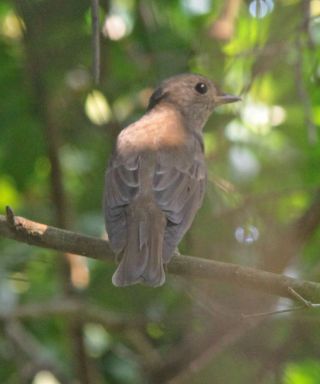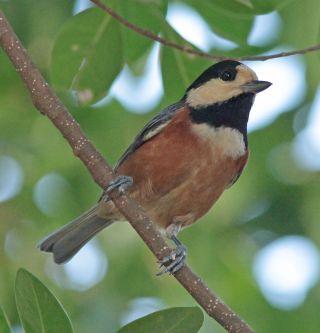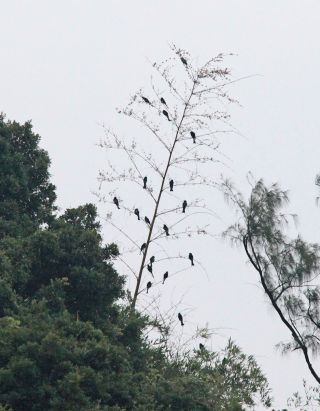Another good week with lots of birds and different species to be seen. This has been an excellent autumn so far, up there with the best in my previous records. Let's hope it can continue.
Bird of the week was the Rosy Starling found by Allen Chan on Monday, but I was lucky to see it. I arrived late on Tuesday and was walking round to my house when I saw it flying around the lagoon area, at one point landing at the top of a tree for several seconds. It was larger than a White-shouldered and the brown colour and particularly the yellow bill were easy to see even at quite a distance. I hadn't unpacked my camera by then, I thought, it's OK, I'll get a photo later. No such luck, I never saw it again and it seemed to leave on Tuesday night.
There were so many birds around. On Wednesday, I totalled 41 non-resident species, well above my 'expected' number of 28 for 3rd October and only the 14th time I have scored over 40 non-resident land bird species in a day. New species for autumn included Black-crowned Night Heron, a juvenile near the helipad, Chinese Goshawk over-flying, Eurasian Woodcock, Oriental Turtle Dove, Olive-backed Pipit, Blackbird and many Dusky Warblers.
Eurasian Woodcock is one of most precise migrants of any species - always arriving in early October and leaving by mid-November, as the attached chart of daily counts by year shows

Other more unexpected species included the Forest Wagtail, both Pallas's Grasshopper and Black-browed Reed Warbler, the latter quite rare on Po Toi, Yellow-browed and Chestnut Buntings together around the helipad and an Orange-headed Thrush, I guess the same one as reported at the weekend. There were also high counts of Dollarbird (at least four daily), Black-naped Oriole (at least eight daily) and Hair-crested Drongo, a record count of 19 on Thursday.
Here some photos of these and others including some species not yet mentioned, Ashy Minivet, Eastern Crowned Warbler, Blue-and-white Flycatcher, the Varied Tit and a treefull of Hair-crested Drongos













One species conspicuous by it's absence was Japanese White-eye. When I first started counting bird numbers on Po Toi in 2006, I believed Japanese White-eye was resident so I didn't count it. I gradually realised it was not a resident, but appears in two 'waves'. The main one starts in mid November with peak numbers before the year end, then gradually falling to zero by the end of May. Then another wave from late August through to mid October, but only in some years. Late October to early November and the summer are usually blank for Japanese White-eye - see this chart showing daily counts from 2009 onwards

I guess the early autumn arrivals are breeding bird dispersals whereas the winter birds may be a northern population - winter arrivals are mentioned in Avifauna.
Anyone going to Po Toi this weekend, please report the Varied Tit if you see it. It has been seen daily since it's arrival on 16 September but was not seen on Thursday, maybe just an odd event but it could have gone.
[
Last edited by wgeoff at 5/10/2012 08:01 ]